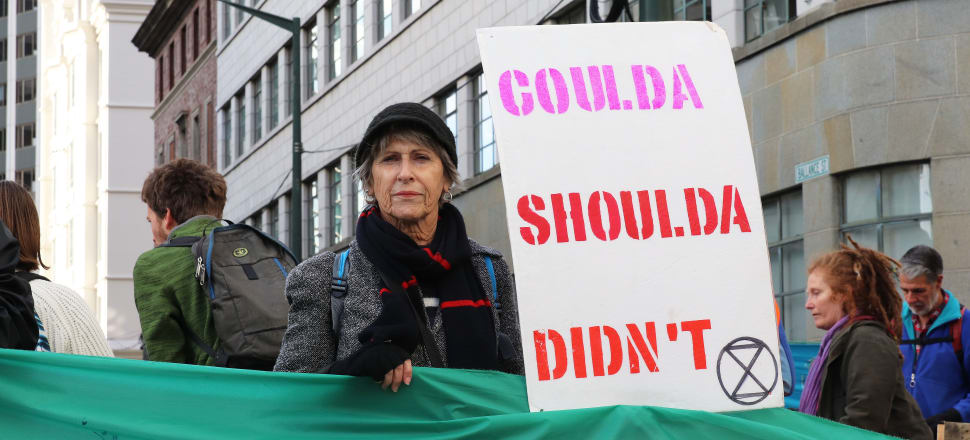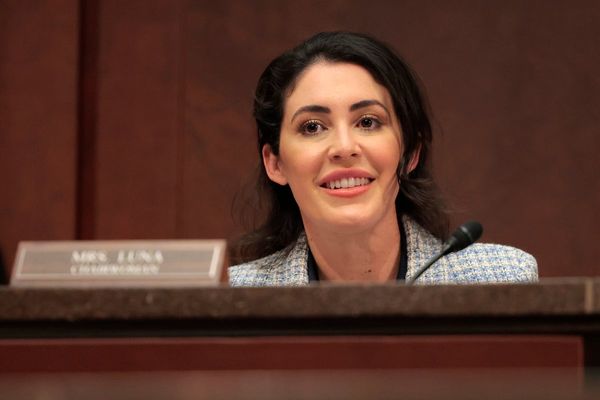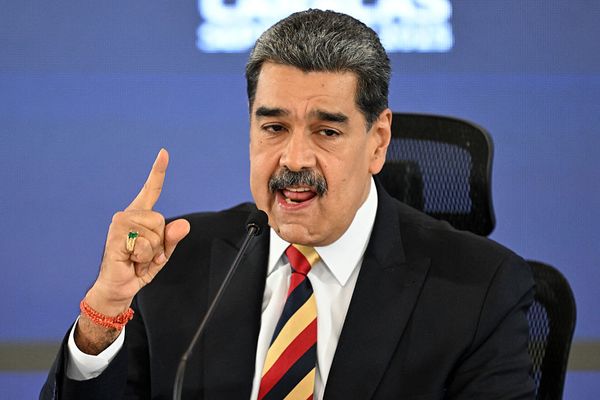
This country made grand gestures and pledges at the UN climate summit, but scratch the surface and there is not a lot to back them up, writes Rod Oram
Opinion: New Zealand had a busy time at the UN’s COP26 climate negotiations in Glasgow. Our Government signed us up to 27 pacts, alliances and declarations - at a rate of more than two a day.
Of those, four go right to the heart of our great challenge to make our land use, farming and food production climate-compatible and ecosystem-sustainable.
Conversely, solving them is by far our greatest opportunity to transform them into highly sophisticated, profitable and enduring sectors.
The four are:
* The Global Methane Pledge: We and 109 other countries to date signed up to a 30 percent cut in human-induced methane by 2030. Just as well it’s non-binding. Our Government’s current methane goal is barely a third of that. Our primary sector says that’s the best it can do. I wrote about the pledge in this report
* The Agriculture Innovation Mission for Climate: The US and the United Arab Emirates founded it “to address the climate crisis by uniting participants to significantly increase and accelerate investment in, and/or other support for, climate-smart agriculture and food systems innovation over the next five years (2021-25).”
* Policy Action Agenda on Transition to Sustainable Agriculture through Repurposing Public Policies & Support & Scaling Innovation: Launched by the UK as President of COP26, its title is self-explanatory. We are one of 34 nation-signatories.
* Glasgow Leaders’ Declaration on Forests and Land Use: Such Nature-Based Solutions are among the best ways to solve the climate crisis because they also help restore ecosystems ravaged by the climate crisis and destructive agricultural practices.
We are one of 141 countries that, in the declaration’s words, “commit to working collectively to halt and reverse forest loss and land degradation by 2030 while delivering sustainable development and promoting an inclusive rural transformation.”
While the politicians were busy signing such bold statements in the COP26 complex on the north bank of the River Clyde, business was busy on the south bank in COP’s Innovation Hub at the Agri-Food Transition Summit. You can watch recordings of the sessions online.
At the summit, two key people I interviewed were from Nestlé, the world’s largest food producer. I asked them about its commitment and strategy to reduce its greenhouse gas emissions across its value chain from farmers to consumers by 50 percent by 2030 on the road to net zero by 2050.
First Milk, a Scottish farmer-owned co-op, is one example of the progress Nestlé is making with its milk suppliers on methane reduction, said Dr Emma Keller, the company’s Head of Sustainability for the UK and Ireland.
Adopting a range of practices, some of which are regenerative agriculture ones, the farmers have cut emissions from their operations by 25 percent in the past few years.
“All these interventions, when you stack them up, can deliver not just amazing greenhouse gas savings, but actually multifunctional benefits that increase the overall performance of the farm. And ultimately, they reward farmers in their pocket, which is crucial,” she said.
That’s directly relevant to us in New Zealand. Nestlé is Fonterra’s largest customer; and the co-op is our largest single source of emissions, accounting for 20 percent of our national total.
So, are the climate plans of our farmers tracking with the best farmers in the world?
No, is the obvious answer wherever you look across peak primary sector organisations in New Zealand.
The latest stark example came this week from He Waka Eke Noa, the sector’s programme with government to work out how to measure, manage, reduce, price and trade on-farm emissions. It offered two broad options for doing that. But it said neither alone would reduce emissions, as my Newsroom colleague Marc Daalder, reported.
The document says the average Canterbury dairy farmer would pay $16,850 per year under the Emissions Trading Scheme option. But that’s only a 5 percent share under the Government’s current stance. The other 95 percent would be met by taxpayers one way or another, costing us $337,000 for the average Canterbury dairy farm per year.
That $337,000 will only rise as carbon prices rise – all for no reduction in emissions. Instead, the Government might as well buy 6 EVs per year per farm and give the cars to low income families. Collectively, those six cars save some 10 tonnes of carbon a year, based on average use of the likes of a petrol Toyota Corolla, and save each family some $1,000 per year by switching to electricity from petrol.
That’s a ridiculously high price to pay for mitigation. But at least it’s better than heavily subsidising farmers to do nothing.
Might the Government have some better emission reduction plans for farmers?
No. Its dearth of ideas is obvious in its discussion document for the Emission Reduction Plan it is due to deliver by next May. This will be the Government’s climate policy pathway to navigate us through the next 15 years. The Government is promising the world we’ll halve our emissions over that period.
The document devotes 28 pages to a range of detailed options for reducing transport emissions, which account for 20 percent of our total emissions. Likewise, it fills 10 pages on detailed options for energy and industry, which account for 26 percent of emissions; seven pages on building and construction, which account for 4 percent of emissions; four pages on the waste stream, which accounts for 4 percent of emissions; and four pages on fluorinated gases, used in refrigeration, for example, which account for 2.5 percent of emissions.
And the section of agriculture, the sector which generates 48 percent of our emissions? Of which 73 percent are methane, which has rocketed up to the top of the global emissions reduction agenda this year because of its extreme potency.
Five pages. Just one more than for fluorinated gases, which are one-twentieth of the cause of the climate crisis. Worse, they are vacuous pages, mostly touting the merits of He Waka Eke Noa.
Since the Government is apparently devoid of ideas for agriculture, might agri-businesses themselves have a few?
No. Agriculture accounts for only five of the 73 pages in the Sustainable Business Council / Climate Leaders Coalition submission on the Government’s Emission Reduction Plan.
In contrast to the useful range of sensible and well researched proposals the SBC/CLC make on transport and energy, they have only two vague ideas on agriculture. Even though they say it is clear that “[T]his agricultural emissions profile is both a serious risk to the New Zealand economy and a huge opportunity.”
1. “Create an accelerated pathway for the development and adoption of agricultural biogenic methane reduction technologies through a step change in public and private investment and international partnerships. Targeting a much more ambitious reduction than 24 percent by 2050.”
2. “We recommend that Government in partnership with Primary Industry develop a long-term aspiration strategy for New Zealand agriculture. This would enable government to communicate both with New Zealand farmers and communities about the future of our agricultural sector in a low-emissions world, specifically what we need to be doing and also to consumers about what we intend to do.”
The first recommendation is obvious. But it’s so scant it’s meaningless. Yet, SBC’s membership includes two major dairy companies (Fonterra and Synlait), two major meat companies (ANZCO and Silver Fern Farms), one major producer of artificial fertilisers (Ravensdown), one major corporate farmer (Ngai Tahu Farming), one key science entity (LIC) and one major farm supplies co-op (Farmlands). In other words, industry 'leaders' across the entire farming value chain.
Either they weren’t much involved in the SBC/CLC submission; and/or they don’t have many ideas or ambitions of their own. If they have other explanations, it would help to hear them.
The second recommendation urging the Government and primary sector to work on “an aspiration strategy” is even more remarkable. Been there. Done that. The Government created the Primary Sector Council in April 2018. Ably led by Lain Jager, a former and highly successful chief executive of Zespri, it produced a series of reports and a final strategy Fit for a Better World.
The Government adopted it in June of last year and the Ministry of Primary Industries is realigning some of its priorities so it can play its role in helping to deliver the strategy. This column of mine in July of last year has further links to this substantial and excellent body of work.
So, we looked great in Glasgow signing up to all those worthy ambitions. But our promises are vapourware. If we don’t figure out very fast how to deliver on them – and then do so – we will irretrievably damage our environment and economy, our society and reputation.







